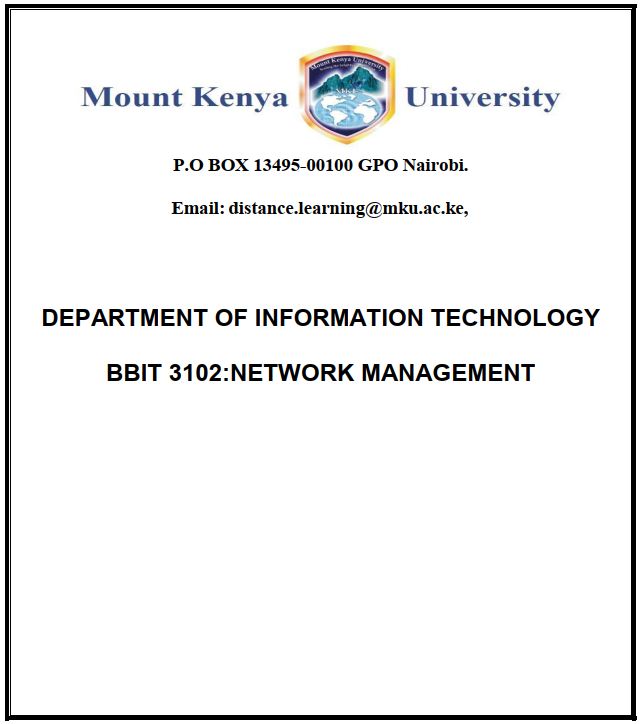
1.1 Definitions
1.2 Network Topologies
1.2.1 Physical Bus Topology
1.2.2 Physical Ring Topology
1.2.3 Physical Star Topology
1.2.4 Logical Topologies
1.2.5 Logical Bus Topology
1.3.2 Logical Ring Topology
1.2.6 Switching
1.3 Transmission Media
1.3.3 Wireless transmission
1.4 Network Protocols
1.4.1 TCP/IP Protocol
1.4.2 Open System Interconnection(OSI) Protocol
Review Questions
CHAPTER 2: NETWORK PLANNING
2.1 Gathering Requirements
2.2 Selecting a topology
2.3 Conducting site Survey
2.4 Capacity Planning
2.5 Creating a Baseline
2.6 Designing the Network
2.7 Network Development Life Cycle(NDLC)
2.7.1 Analyze requirements
2.7.2 Develop the logical design
2.7.3 Develop the physical design
2.7.4 Factors That Affect a Network Design
2.8 IP Addresses and Address Classes
CHAPTER 3: NETWORK HARDWARE AND SOFTWARE COMPONENTS
3.1 Hardware and Software Components
3.1.1 Network Adapter(Network Interface Card)
3.1.2 Modem
3.1.3 Repeater
3.1.4 Hub
3.1.5 Switch
3.1.6 Wireless Access Point
3.1.7 Router
3.1.8 Residential Gateway
3.1.9 Gateway
3.2 Network Operating Systems
3.2.1 Choosing a NOS
3.2.2 Types
CHAPTER 4: PROCURING NETWORK RESOURCES
4.1 Introduction
4.2 Decision Making Strategy in Network Resource acquisition 4.3 IT Acquisition Process
Identifying the Business Objective
Implementing the Solution
CHAPTER 5: CONFIGURING NETWORK DEVICES
5.1 LAN network address
5.7 The LAN hardware
5.9 Configuring the LAN
5.10 Testing the LAN
5.11 Troubleshooting the LAN
5.12 Connecting to the Internet
Routing
Proxy servers
IP Masquerading (NAT
Routing vs proxy servers vs IP Masquerading
CHAPTER 6: NETWORK SECURITY
6.1 Security Issues
6.1.1 Common Attacks
6.1.2 Observing the Basics
6.2 Solutions to Security Issues
6.3 The Need for a Security Policy
6.3.1 Network Security Policy
6.3.2 Everything not specifically permitted is denied.
6.4 Incorporating Security into Your Network Design
6.4.1 Expecting the Worst, Planning for the Worst
CHAPTER 7: TROUBLESHOOTING NETWORK PROBLEMS
7.1 Introduction
7.3 Network Management
7.4 Expectations
7.5 Functional Areas of Network Management
7.5.1 Fault Management
7.5.2 Configuration Management
7.5.5 Accounting Management
CHAPTER 8: DISASTER RECOVERY
8.1 Introduction
8.2 What Is Risk With Respect To Network Systems?
8.3 Why Is It Important to Manage Risk?
8.4 Risk Assessment
8.4.1 Quantitative Risk Assessment
8.4.2 Qualitative Risk Assessment
8.4.3 Identifying Threats
8.4.4 Identifying Vulnerabilities
8.4.5 Relating Threats to Vulnerabilities
8.4.6 Defining Likelihood
8.4.7 Sample Likelihood Definitions
8.4.8 Defining Impact
8.4.9 How Is Risk Managed?
8.4.10 Communicating Risks and Risk Management Strategies
